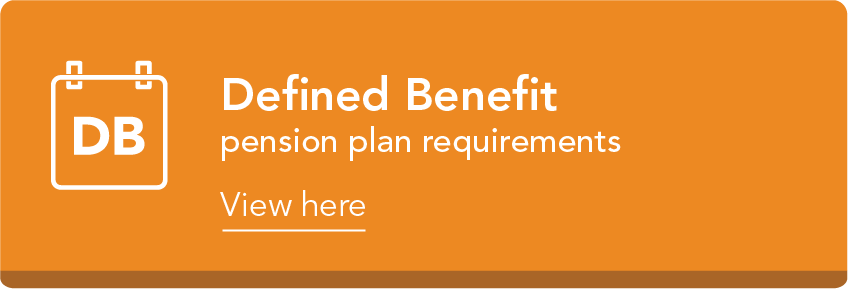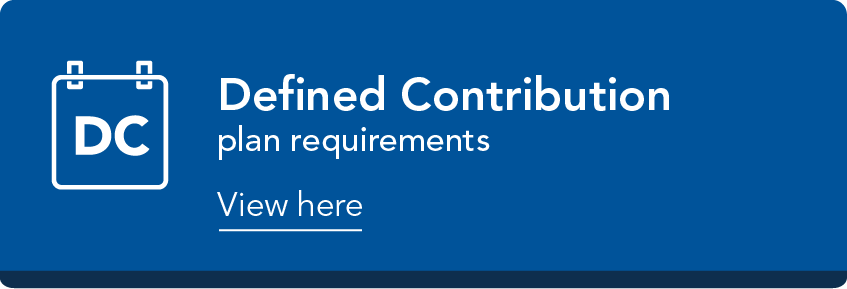Retirement Insights
Best Practices to Keep Your Retirement Plan in Compliance
February 11, 2025
When you’re responsible for managing an employer-sponsored retirement plan, you have the fiduciary duty to act solely in the best interests of the plan participants and beneficiaries, following ERISA guidelines. ERISA, the Employee Retirement Income Security Act of 1974, places significant importance on fiduciary duty. Any breach of fiduciary duty obligations can result in personal liability for the individuals responsible.

of retirement plan sponsors do not realize they serve as fiduciaries to their
organization’s retirement plan.1
All fiduciaries need to follow best practices to ensure their plans are operating according to the rules, regulations and governing plan documents. This process can be accomplished by creating a compliance checklist for 2025.
Self-Audits Reduce Liabilities
Whether or not you fully understand your role as a fiduciary, it’s critical that you comply with current legislation and regulations. In recent years, the U.S. Department of Labor (DOL) and Internal Revenue Service (IRS) have increased the number and frequency of retirement plan compliance audits. By properly maintaining, understanding and following plan documents, retirement plan sponsors and administrators can minimize or eliminate risk should their plan be audited.
Prudent retirement plan sponsors are proactive: they maintain up-to-date procedures and guidelines, and conduct regular operational compliance reviews, or self-audits. By doing this, they can mitigate potential risks, reduce future liabilities and avoid unnecessary costs.
The DOL and IRS periodically publish lists of the most common noncompliance issues they find when reviewing retirement plans. Among the most common issues involving noncompliance are:
![]()
Plan document failures*
![]()
Plan eligibility
![]()
Loans, in-service distributions
![]()
Vesting
![]()
Nondiscrimination and coverage testing
![]()
Late contributions
* such as failure to adopt required amendments and operational failures to the definition of compensation
This list isn’t exhaustive, but it’s a useful reference for your own plan review. USI Consulting Group (USICG) finds compliance issues in at least a third of the plans we review. Our compliance experts can help with the review process and correct any identified errors.
Create Your Compliance Checklist for 2025
A compliance checklist serves as a guide throughout the year. To help you create your own compliance checklist, USICG has summarized all 2025 compliance deadlines and action items, and we also provide detailed 2025 retirement plan compliance calendars:
We recommend including everything from plan documentation and benefit calculations to day-to-day administrative procedures on your compliance checklist. Once you have a checklist, set a timeline for completing a compliance review. Typically, a review can take between six weeks and six months to complete.
Case Study: Reducing cost and risk with an operational review
A company discovered operational issues that were causing delays in its automatic 401(k) plan enrollment process. USICG reviewed all functions related to the 401(k) plan to determine the level of document and operational compliance:
- Eligibility and entry dates
- Reconciliation of employee contributions from payroll to recordkeeper
- Timing of contribution deposits
- Definition of plan-eligible compensation
- Participant distributions (including force-outs and hardships)
USICG presented a report of its findings for each area of review, including a list of participants impacted. The report included recommendations for day-to-day plan administration to ensure regulatory compliance with ERISA and the Internal Revenue Code going forward.
Further, USICG helped the company to correct the discovered errors by utilizing the IRS’s and DOL’s voluntary correction procedures, reducing the correction cost and avoiding penalties had the errors been identified under DOL or IRS audit. By bringing the plan into compliance, the company was able to mitigate future risk of negative findings under audit.2
New Year, New Rules: Set a SECURE 2.0 Strategy
We had a great webinar providing insights into what employers need to know to keep their retirement plan in compliance with SECURE 2.0 provisions. Check out our recording to learn more and get up to speed.
How USI Consulting Group Can Help
Understanding your obligations under ERISA goes beyond mere compliance — it demonstrates responsible business practices and a commitment to supporting your workforce. While this can feel overwhelming, USICG has the expertise to help you better understand your fiduciary responsibilities and mitigate fiduciary risk. We provide clients with the following retirement plan support:
- Fiduciary training
- Plan compliance oversight
- Plan management
- Ongoing investment due diligence oversight
- Periodic recordkeeper provider searches
- Fee benchmarking and plan design consulting
To learn more, please contact your USICG representative, visit our Contact Us page or reach out to us at information@usicg.com.
1 2023 Defined Contribution Plan Sponsor Survey Findings, J.P.Morgan Asset Management
2 Actual results will vary. The use of any stated benefits in this case study is intended for illustrative purposes only and may not be used to predict or project future results.
Investment advice provided to the Plan by USI Advisors, Inc. Under certain arrangements, securities offered to the Plan through USI Securities, Inc. Member FINRA/SIPC. Both USI Advisors, Inc. and USI Securities, Inc. are affiliates of USI Consulting Group.
This information is provided solely for educational purposes and is not to be construed as investment, legal or tax advice. Prior to acting on this information, we recommend you seek independent advice specific to your situation from a qualified investment/legal/tax professional.
INSIGHTS BY TOPIC
Not receiving our newsletter?
Stay up to date with retirement plan updates and insights by subscribing to our email list.


